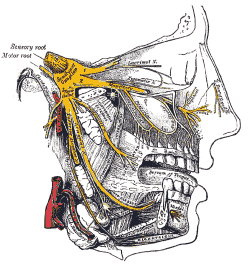Causes of Migraine Headache
In recent years a lot of research has been done to find the causes of migraine headache. Some of this research has been directing us toward solutions that will stop a lot of migraine headaches from happening in the first place.
But first it's critical to give some definitions - when we're searching for "causes", what exactly are we looking for?
Definitions
First, it's important to remember that migraine and migraine headache are two different things. The condition in general is migraine or migraine disease. People with migraine tend to be prone to have migraine attacks, which involve a whole host of symptoms. These symptoms may involve everything from a general "heaviness" to nausea, visual disturbances, sensitivity to light, congestion, and a host of other issues. (For an introduction to common migraine symptoms, read Think you might have a symptom of migraines? For more details, check out What is Migraine? (the Story of Symptoms))
That being said, migraine headache is actually only one possible symptom of migraine. Often migraine attacks involve moderate to severe headache, but not always. Sometimes there is mild headache, or none at all.
And what do we mean by causes? In the end, no one knows what causes one person to be prone to migraine attacks, although we have some pretty good ideas. Migraine is a neurological disease, related to genetics. We know a lot about what goes on in the body during an attack, but less is known about why that chain-reaction starts so readily in some people and not in others.
For more on the general cause of migraine, read about the causes of migraine headache and migraine here.
Causes of Migraine Headache
But what about the cause of the headache itself? The headache is a part of the chain-reaction that happens in the body during a migraine attack. As in much pain, nerves are involved - in particular, the nerve cells known as nociceptors. Some of the pain may start with the nociceptors in the trigeminal nerve.
 The Trigeminal Nerve (yellow) is a key factor in migraine headache. Courtesy of btarski |
The trigeminal nerve is a nerve in the head that is involved in giving feeling and movement to the face, teeth, mouth and nasal cavity. It seems to receive messages from the brain which trigger pain. This is why some migraineurs feel pain in their face, not just other areas of the head.
But this nerve also sends messages to blood vessels in the head. Changes in blood flow may cause a variety of symptoms in migraine, but most notably they are related to pain.
Leaking blood vessel walls can cause inflammation and pain, and it could be that the brain is also making you more sensitive to pain in the first place.
There is a great deal of debate about just how much of a role blood vessels have in migraine. You can read a bit of the current conversation here.
In the end, the causes of migraine headache pain may be very complex - much more complex than blood vessels or a pinched nerve. Migraine patients seem to actually be more sensitive to pain. In other words, their brains are actually different, and that sensitivity means that they feel pain - and it could be pain all over the body - that most people don't feel.
And once the vicious circle begins, the pain can become unbearable.
So the actual causes of migraine headache, though not fully understood, seem to be a web of issues - messages being sent back and forth between the brain, nerves, and blood vessels. As you might expect in a cycle of pain like this, other parts of the body may get involved, such as muscles and joints.
Yes, but why did I get a headache today?
Why you got a headache today and not yesterday is a bit of a different question. This involves triggers - those things that spark an attack, usually in someone who already has migraine disease.
There are a host of triggers, and they impact everyone in different ways. Some of these are internal (such as hormonal changes), others external (such as eating certain foods or being exposed to a chemical in the air).
If you want to learn more about identifying your own migraine triggers, check out Migraine Triggers: Track them Down.